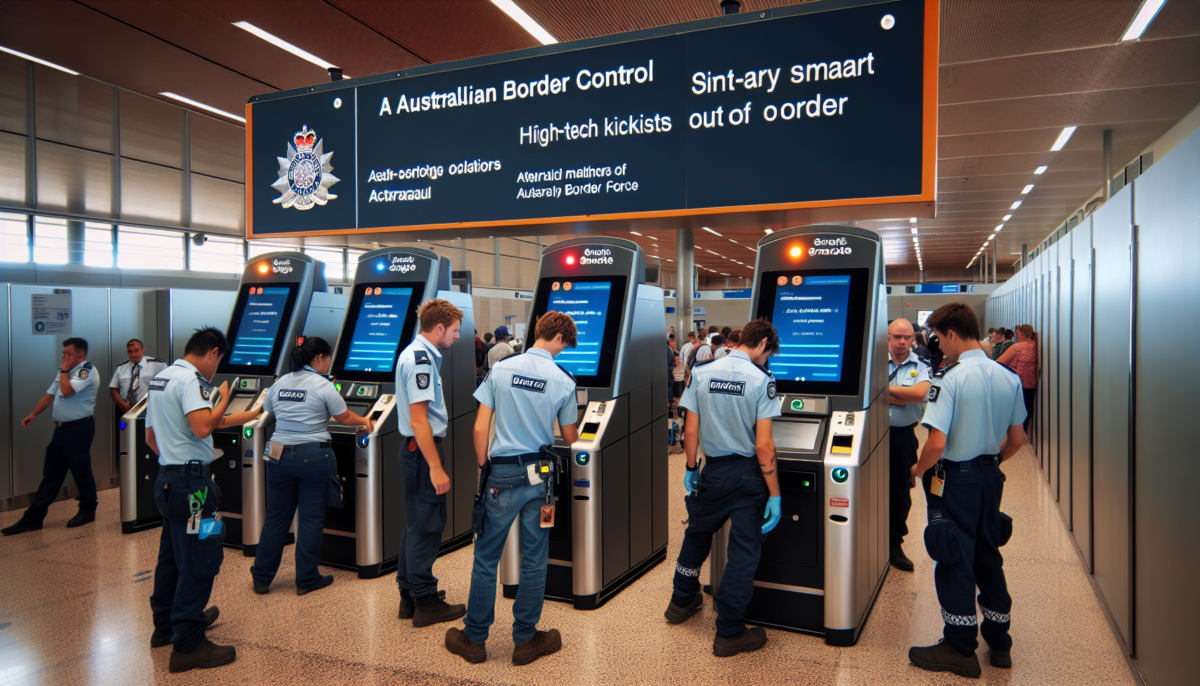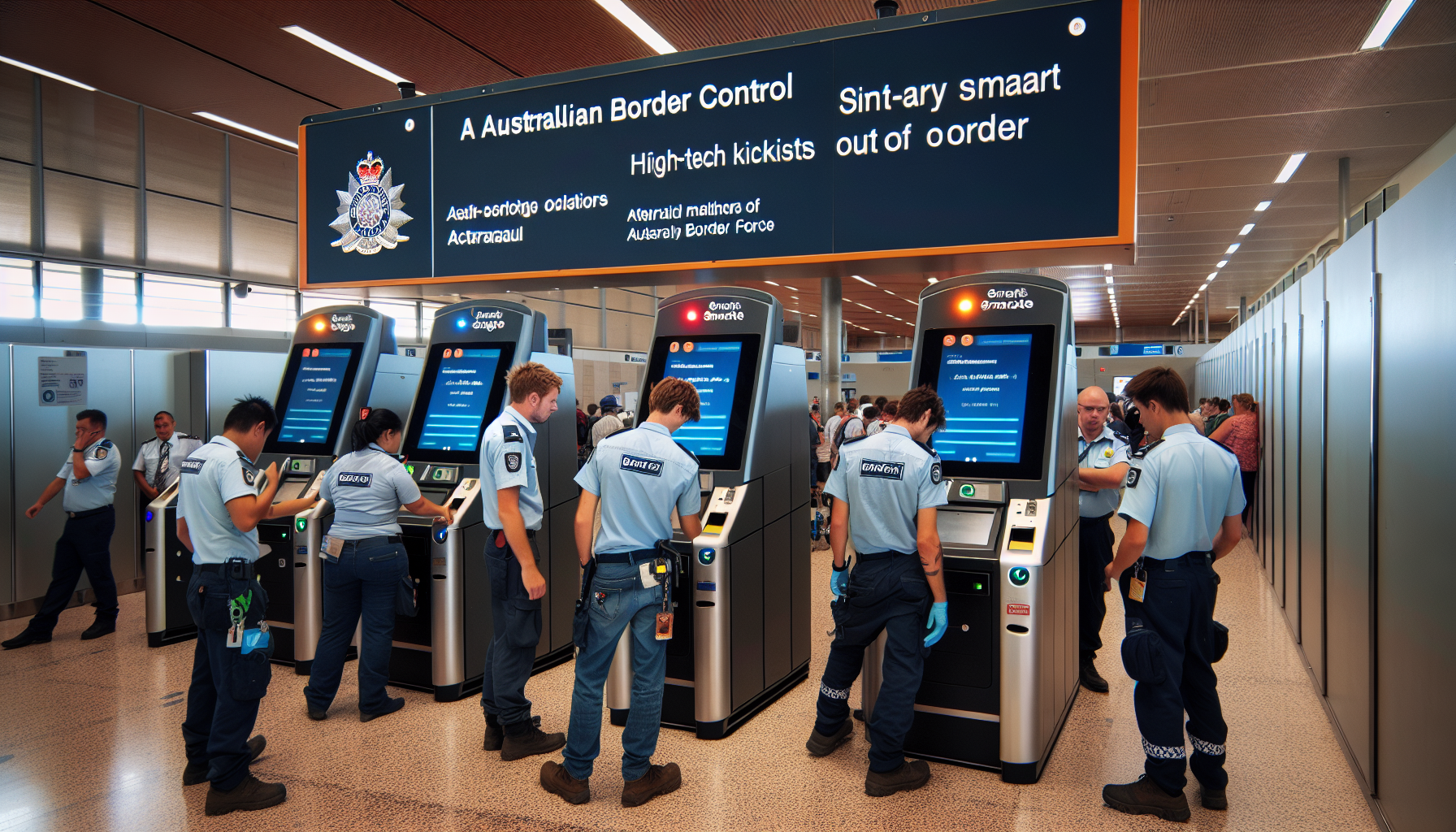SmartGate Kiosks Downtime Affects Australian Border Force Activities
We independently review everything we recommend. When you buy through our links, we may earn a commission which is paid directly to our Australia-based writers, editors, and support staff. Thank you for your support!

Technical Disruption of SmartGate Kiosks Affects Australian Border Force Operations

Brief Overview
- SmartGate kiosks at international airports in Australia faced a significant technical disruption.
- This issue resulted in extended waits at Sydney, Melbourne, and Brisbane airports as Border Force staff were required to process passengers manually.
- Approximately 1,000 travelers were specifically impacted at Melbourne Airport.
- Systems were restored by midday AEDT, although the reason for the disruption is still being investigated.
- Additional Australian Border Force (ABF) personnel were dispatched to lessen the impact.
What Occurred?
Earlier today, travelers at Australia’s most frequented airports dealt with notable delays as the Australian Border Force’s (ABF) SmartGate kiosks became nonoperational. The outage affected airports in Sydney, Melbourne, and Brisbane, compounding pressure on ABF officers to manually process incoming and outgoing travelers.
Effects on Passengers
The disruption caused extensive lines at major international airports. As reported by ABC, Sydney and Melbourne experienced particularly severe delays, with Melbourne Airport estimating that roughly 1,000 travelers were affected during the downtime. The situation led to prolonged waits as ABF officers struggled to manage passenger processing manually, a stark contrast to the efficiency typically offered by the automated SmartGate system.
SmartGates: An Essential Component of Australia’s Border Security
Australia’s SmartGate system is pivotal in the management of international arrivals and departures. These automated kiosks permit eligible travelers to circumvent standard passport control by employing facial recognition technology for identity verification. Generally, the system accelerates passenger processing and minimizes wait time, especially in peak travel seasons.
Nevertheless, when SmartGates malfunction, as witnessed in this incident, the results are immediate and clearly visible. Airports must revert to slower manual processing, leading to increased wait times and traveler dissatisfaction.
What Led to the Disruption?
By midday AEDT, the ABF confirmed that the matter was resolved, with systems functioning again at all locations. However, the underlying cause of the outage is still being examined. The ABF expressed gratitude to travelers for their understanding throughout the event but has yet to disclose further details about the incident’s cause.
Technical disruptions of this nature can stem from a variety of issues, such as software bugs, hardware failures, or connectivity problems. While the ABF investigates the root cause, this occurrence underscores the necessity for robust backup systems to guarantee seamless operations at critical national infrastructure points like international airports.
Border Force Intervenes
To address the situation, the ABF sent extra personnel to manually process passengers, striving to reduce the impact. While long lines were noted, the additional staff aimed to ensure that delays were kept to a minimum under the circumstances.
In a message on social media platform X, the ABF recognized the issue and reassured the public that they were working to resolve it. The message also expressed appreciation for travelers’ patience during the disruption.
Past SmartGate Challenges and Enhancements
This is not the first occasion that Australia’s SmartGate system has garnered attention. In recent years, various upgrades and expansions have been implemented to enhance processing times and improve security checks. However, the system’s reliability has sometimes been questioned, particularly during high-demand periods, including school holidays or major international events.
In 2023, the government initiated plans to enhance SmartGate’s infrastructure, incorporating technology upgrades intended to improve border control further. Yet, today’s disruption serves as a reminder that even well-established systems may encounter unexpected obstacles.
Conclusion
Today’s disruption of SmartGate kiosks at Australia’s primary international airports resulted in severe delays and affected around 1,000 travelers at Melbourne Airport alone. The issue, necessitating manual processing by the Australian Border Force, was resolved by midday AEDT, yet the specific cause remains under investigation. This incident highlights the vital role of SmartGates in contemporary border security and the challenges involved when such systems fail.
Q: What is the SmartGate system?
A:
SmartGate is an automated border processing solution found at Australian international airports. It utilizes facial recognition technology to match a passenger’s face with their passport, facilitating quicker processing through immigration. This system aims to streamline procedures for eligible travelers, shortening wait times and boosting efficiency.
Q: How long did the SmartGate disruption last?
A:
The disruption persisted for several hours in the morning, with systems being restored by midday AEDT. During this interval, ABF officers were tasked with manually processing all passengers, resulting in significant delays, particularly at Sydney, Melbourne, and Brisbane airports.
Q: Which airports were impacted by the disruption?
A:
The disruption affected international airports throughout Australia, including Sydney, Melbourne, and Brisbane. These airports rank among the busiest in the country, catering to thousands of international travelers each day.
Q: What triggered the disruption?
A:
The precise cause of the disruption remains under investigation. The ABF has not provided specifics but assures the public that the matter was addressed by midday. Such disruptions may arise from various factors, including technical failures or network complications.
Q: Were there any lasting effects from the disruption?
A:
Currently, there appear to be no enduring effects. The systems were restored by midday, leading to a return to normal operations. Nonetheless, the delays caused significant inconvenience for travelers during the outage, with some flights likely impacted by extended processing times.
Q: What actions were taken to manage the situation?
A:
The ABF dispatched additional personnel to manually process passengers during the disruption. While this helped mitigate the situation, it was slower than the usual automated SmartGate process, causing delays and long lines at the affected airports.
Q: How many travelers were impacted by the disruption?
A:
At Melbourne Airport alone, around 1,000 travelers were directly affected by the disruption. Given the scale of the incident, it is probable that thousands of passengers across various airports experienced delays.
